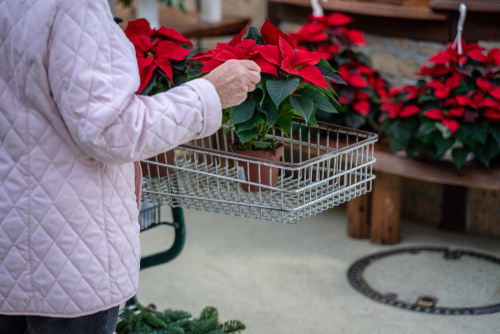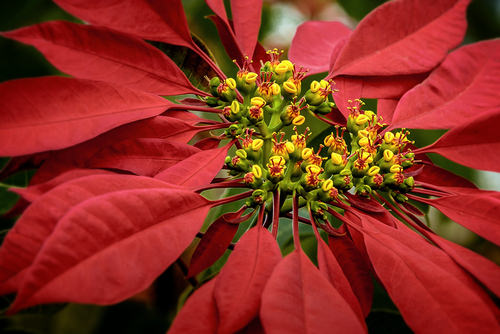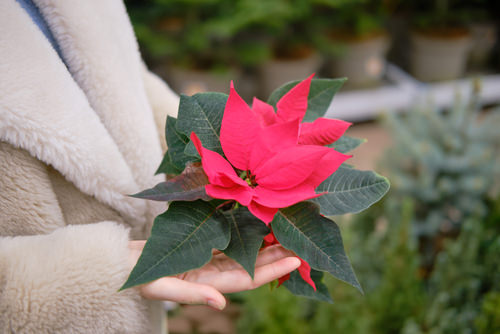Buying the perfect Poinsettias could be a tricky business. Learn How to Buy the Best Poinsettias with the help of our detailed buying guide!

Poinsettias spell holiday spirit like no other plant. With vibrant seasonal colors, they are one of the easiest ways to decorate your home during the Christmas season. However, to get the best specimens, you need to consider many things, and to help you out, we bring you a guide on How to Buy the Best Poinsettias!
Fun Fact: According to a 2015 report published on The University of Tennessee website, poinsettias are the top-selling potted flowering plants in the U.S.! In economic terms, that’s $237 million out of a total of $781 million in sales of all flowering potted houseplants!
Want to know how to make Poinsettias red? Click here
How to Buy the Best Poinsettias?
1. Look for Dark and Dense Green Foliage

Do not look for just the more colored leaves while buying poinsettias, and pay more attention to the green color of the lower foliage. It indicates that the plant has a healthy root system and is young—which will help it turn red later!
Fun Fact: December 12 is celebrated as National Poinsettia Day! The day marks the death anniversary of Joel Roberts Poinsett, who brought poinsettia to the United States from Mexico.
Are Poinsettias poisonous to cats and dogs? Find out here
2. Check the Plant for Tightly Clustered Buds

The more unopened buds the plant has at the time of buying, the more it will have the chance to last long through the entire holiday and the winter season after you get it home.
3. Look for Vivid Leaves Surrounding the Buds

Another crucial factor that you need to look for is the small, colorful leaves surrounding the tender yellow buds. Only buy that plant that has a perked-up vivid red hue (or whatever color you’re buying) in the small leaves.
If the leaves around the buds are yellow, they won’t achieve a red hue during the holidays.
Fun Fact: California tops the charts regarding the most poinsettia-producing state.
Here’s all you need to know about how to re-bloom Poinsettias
4. Tiny Yellow Grains on the Leaves is a Big No-No

If the yellow buds have already started to shed pollen (indicating it has already bloomed), then the plant will be useless to you because it means the colorful bracts will fall soon.
It is a good idea to gently shake the plant and look for tiny yellow pollen on the leaves. If you spot them, leave that plant alone!
5. Do Not Buy Plants with Yellow, Sagging, or Faded Leaves

The leaves must look bright, green, healthy, and full of color. Yellowing foliage indicates that the plant is not in good health. The same goes for sagging leaves with a green-white hue and discolored bracts.
Check out our article on growing Poinsettias from cuttings here
6. Look for Any Signs of Insects and Diseases

Last but not least, look for any signs of insects and diseases both on the undersides of leaves and buds. If you spot them, do not buy that plant, as they spread at a rapid pace and may infect the entire plant before you can realize it.
However, if you’re getting a good deal and ready for a treat, don’t miss the opportunity but avoid introducing such a plant to your collection unless pest problem is subsided.
A Few Points to Consider
- Avoid buying poinsettias with soft and mushy leaves as it might be due to overwatering and negligence.
- To help the plant become accustomed to its new location, gradually expose it to bright, indirect light before placing it in more sun.
- After buying the plant, cover it with a plastic bag or paper wrap while transporting it home from the garden shop. This will keep it protected and minimize the ill effects of temperature difference shock.


